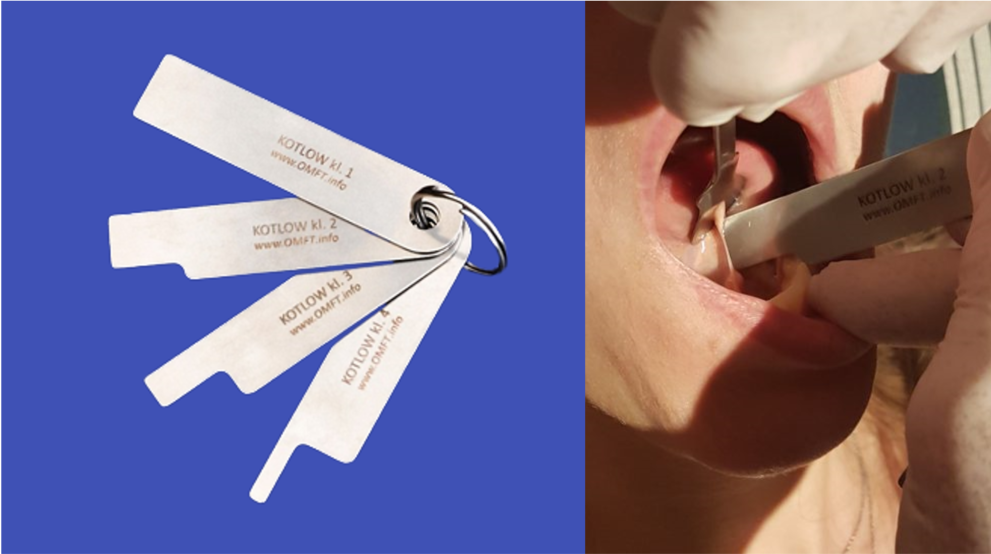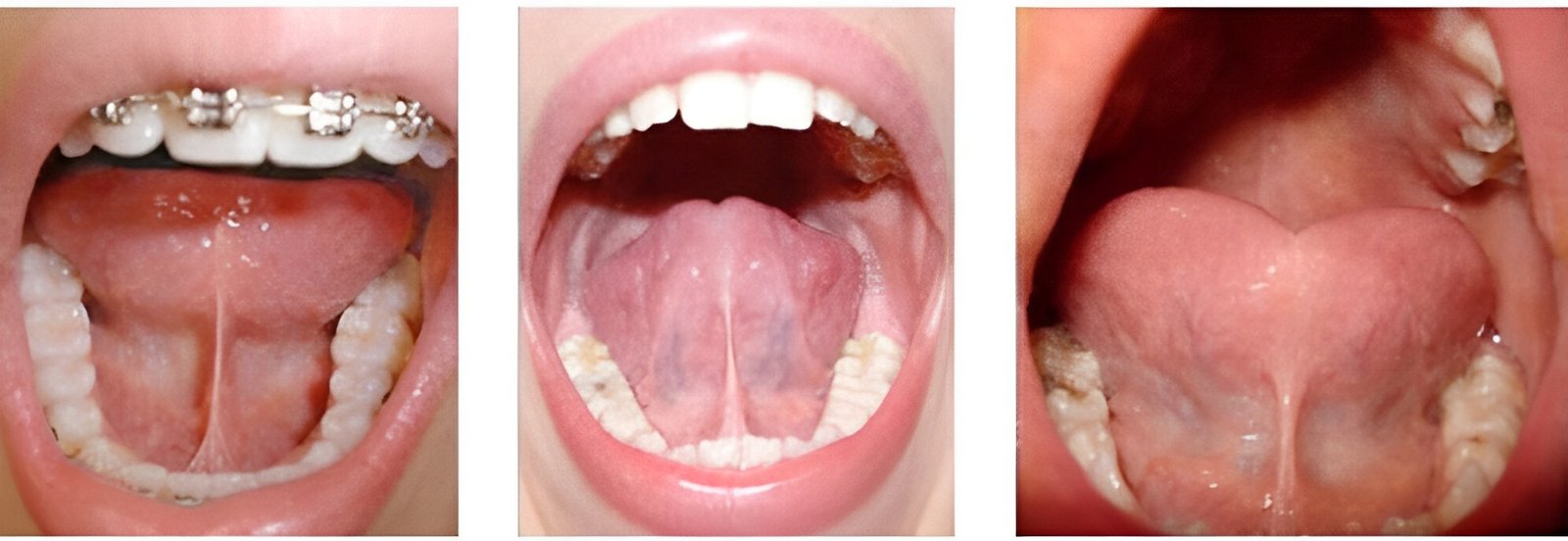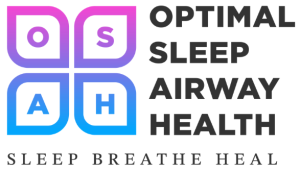ANKYLOGLOSSIA/TONGUE ORAL RESTRICTION (TONGUE TIE)

Ankyloglossia is the medical term for what is commonly known as tongue-tie. It is described as a congenital disorder with clinical signs of a low lingual frenulum, which limits movement of the tongue, and causes speaking and swallowing difficulties.
It is considered an uncommon congenital oral anomaly that can cause difficulty with breast-feeding and later on speech articulation problems. We will see that it is surprisingly common, and the statistics don’t do it justice.
Ankyloglossia is commonly classified according to Kotlow’s Classification System which has 4 classes.
| Category | Length of the free tongue (mm) |
| Normal | > 16 |
| Class I: Mild Ankyloglossia | 12-16 |
| Class II: Moderate Ankyloglossia | 8-11 |
| Class III: Severe Ankyloglossia | 4-7 |
| Class IV: Complete Ankyloglossia | <4 |
Kotlow’s Tool is really only considering the persons inability to pass the free tongue past the lower lip. The free tongue is defined as the length of the tongue from the insertion distance of the lingual frenulum to the tip of the tongue 2 . This classification tool is only useful for assessment of anterior ties.

I note that according to Nikki Mills; a New Zealand based expert on Tongue tie, the above tool neglects to classify posterior tongue ties or other variants, missing a lot of peoples issues and allowing health issues to develop long term. We need a better tool to suit the human population.
Ankyloglossia is not a discrete occurrence of childhood but morphs into other issues seen at developmental stages or later phases of life such as orthodontic requirements and snoring/apnoea, which we have developed stand-alone treatment for without looking for the connecting thread. There is requirement for an interprofessional team in treating and decreasing long term morbidity in patients with ankyloglossia, and its long term consequences.
Ankyloglossia is an Oral fascial restriction which impact significantly on health and development of children. The awareness in the infants has seen a spike in attention more towards breast feeding and latch improvement than the massive impact on development, breathing, and sleep health.

However, there is little mention of its impact on, or existence in the adult population, regardless of its impact on the function of the TMJ and cranium or disease progress in the adult population.
If oral fascial restriction and craniofacial maldevelopment occurs in the infant, and is not intercepted and rehabilitated, then it will continue into adulthood potentially leading to developmental compensations away from optimal and health consequences.
Concerned parents are referred for tongue oral fascia releases for their newborns to help a child to breastfeed. But what about those of us who didn’t get released earlier in life?
Adult oral facial restrictions are a much less talked about phenomena which we shall discuss along with the developmental impacts in children.
Posterior Tongue Tie
Posterior tongue tie also known as a posterior ankyloglossia, is a form of tongue tie in which the tissue under the tongue is attached too far back in the mouth, restricting movement of the tongue.

Here are some steps that may be taken to diagnose posterior tongue tie:
- Physical examination: A healthcare professional will perform a physical examination of the tongue, looking for any abnormalities in the shape or movement of the tongue. They may also check for other signs of tongue tie, such as difficulty breastfeeding or latching onto a bottle.
- Medical history: The healthcare professional may ask about the person's medical history, including any previous diagnoses or symptoms that may be related to tongue tie.
- Imaging tests: In some cases, imaging tests such as an X-ray or ultrasound may be used to visualize the tongue and surrounding tissue.
- Specialized assessment: Some healthcare professionals may use specialized assessments, such as the Lingual Frenulum Assessment Tool (LFAT) or the Ankyloglossia Functioning Score (AFS), to help diagnose posterior tongue tie.
Reasons why tongue tie may not be diagnosed regularly

There are several reasons why tongue tie may not be diagnosed regularly:
- Lack of awareness: Tongue tie is not a well-known condition, and many healthcare professionals may not be aware of it or the potential impact it can have on a person’s health. As a result, they may not consider it as a potential diagnosis.
- Difficulty identifying the condition: Tongue tie can be difficult to identify, especially in infants and young children. The tissue under the tongue may be hard to see, and some cases of tongue tie may be very mild, making them difficult to detect.
- Limited screening: Tongue tie is not routinely screened for in many healthcare settings, so it may not be detected unless it is specifically looked for, or parents have had a previous child with tongue tie and are prewarned about the condition.
- Misconceptions about the condition: There are many misconceptions about tongue tie, including the belief that it is not a serious condition or that it will resolve on its own. This can lead to a lack of recognition and treatment of the condition, which sadly will lead to long term health consequences in many other areas.
- Drive to not intervene: There is a prevalent hands off response, a wait and see approach in health care which also then carries through to parental response. For the physician, this may stem from concern about being overly interventionist when unnecessary, however it may also stem from the concern about insurance costs and not being sued for making things worse.
Tongue tie, if not diagnosed appropriately in a child, it can lead to a range of consequences:

- Difficulty breastfeeding: Tongue tie can make it difficult for an infant to breastfeed effectively, leading to poor weight gain, a failure to thrive and other health problems.
- Speech delays: Tongue tie can affect the development of speech and language skills in children, leading to delays in communication.
- Dental problems: Tongue tie can cause problems with tooth alignment and jaw development, leading to dental problems in some cases.
- Difficulty swallowing: Tongue tie can make it difficult for a child to swallow properly, leading to problems with feeding and malnutrition.
- Social and emotional issues: Children with tongue tie may face social and emotional challenges due to difficulty communicating and participating in activities such as sports and games.
It is important to diagnose and treat tongue tie as early as possible to avoid these consequences and to improve the child’s overall health and quality of life. It may be necessary to see multiple healthcare professionals to get a proper diagnosis. If you suspect that your child may have tongue tie, it is recommended to speak with a healthcare professional for a proper diagnosis and treatment plan.
Tongue Tie Problems In Adults

For one reason or another, tongue-ties became a lost part of the pediatric assessment, both medical and dental. Up until the early twentieth century midwives were known to clip a newborn’s tongue-tie at birth if spotted with a sharpened fingernail kept especially for this purpose. Retired pediatricians have reported a ‘thrive or die’ approach early in their careers. If newborns were found to have feeding or other issues, they were routinely checked for tongue tie as the most likely initial problem that could be resolved quickly.
We saw a decline in oral fascial restriction intervention in the second half of the 20th century along with a movement away from the practice of breastfeeding. This practice recommendation fortunately has taken a 180-degree U-turn and is back to breast is best.
The decline in tongue tie intervention appears to have been caused by or coincides with the rise of formula and bottle feeding, along with an increase in litigation and insurance concerns about intervention, which together, made diagnosing a tongue tie as a long-lost art.
The beginning of the 21 st century has bought diagnosis of tongue tie back to life. With many papers published on oral facial development and the connection to postural change, behavioural and neuro-developmental issues.
Sadly, that means there are at least 2 and possibly 3 or 4 generations that had their tongue ties missed at birth with ongoing consequences, especially its impact on airway function as we will discuss. It’s a large group of adults and could mean that you unknowingly have a tongue-tie.
Your tongue is such a crucial part of your body. The neuromuscular system is intertwined with the brain, the digestive system, the neck, spine, and teeth, as well as in spacial awareness, sound localisation and the capacity to emotively respond in an appropriate fashion.


Really informative post! Now I understand why REM sleep is so important.
Hi I just listened to you and Nada Thankyou for your detail & expertise
I have a background in Dental Therapy & Myofunctional Therapy
Everything you said I have been thinking 🙌
Dental Therspist /Myofunctional Therapist working for 11 years
Your interview with Nada was so important Thankyou for your voice 🙌everything you said I think & have wondered how to get the patriarchy/ universities to pay attention to functional frenuplasty & pre & post therapy
I will refer colleagues to your website
Always interested in learning off to Malaysia in May for Integrative meeting
I would be interested to hear you speak especially if you are coming to Sydney
Dental Therspist /Myofunctional Therapist working for 11 years
Your interview with Nada was so important Thankyou for your voice 🙌everything you said I think & have wondered how to get the patriarchy/ universities to pay attention to functional frenuplasty & pre & post therapy
I will refer colleagues to your website
Always interested in learning off to Malaysia in May for Integrative meeting
I would be interested to hear you speak especially if you are coming to Sydney
Thank you! its always great to have my thoughts appreciated. I had hoped to be in Malaysia, but was not invited. I am in process of trying to get set with a university for a PHD. based around domestication theory. with this in mind it is to draw attention to the needs of the neurodevelopment effects of the mouth and frenuloplasty. I am more than happy to come lecture if you have a group for me to talk to in Sydney